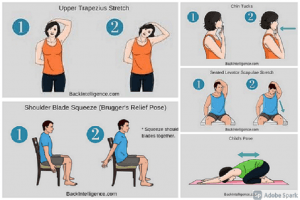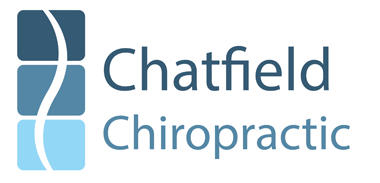
How to Alleviate Pain in Your Mid & Upper Back
While pain in the mid and upper back is not as common as lower back pain or neck pain, it can significantly disrupt your life and prevent you from participating in the activities you love and enjoy. This type of back pain is usually caused by sprains and strains in the soft tissue (muscles, tendons, and ligaments) around the vertebrae—but can also result from injury, overuse, or prolonged poor posture.
In fact, mid and upper back pain often feels like stiffness, but it can also present as radiating pain up into the neck or down into the lower back. Patients often report a burning or tingling sensation too.
Since upper back pain is often connected to your lifestyle, it can often be remedied by a few simple changes at home, work, and play! Let’s take a look at how you can ease (and prevent!) mid and upper back pain.
8 Ways to Find Back Pain Relief
Besides aging (wear and tear) and injury, most instances of upper back pain involve the muscles and soft tissue around the vertebrae. So, strengthening and stretching this soft tissue is key to resolving most cases of mid and upper back pain.
For best results, combine as many of the following as you can—they may seem small, but they can make a big difference!
1. Get Moving
One of the best ways to strengthen your back muscles and ease tension is to move your body. Exercise increases circulation and improves the mobility of your soft tissue. Gentle cardio, pilates, and swimming are some of the best options for your back.
As you build muscle strength, you naturally support your vertebrae. This not only eases stiffness—it helps prevent future injuries and pain.
If your mid and upper back pain is the result of trauma (or is a chronic issue), you’ll need to get checked out medically before engaging in any kind of exercise!
2. Straighten Up
If you notice your upper back hurts after extra time at your computer or on your phone, there’s a good chance your posture is the culprit.
Prolonged poor posture (hunched shoulders) can weaken some muscles and strain others. Make your posture a priority—lower your shoulders and sit (and stand) up straight as often as possible. This simple act strengthens your back muscles and lessens your upper back pain.
3. Stretch
Stress, unusual lifting activities (like moving house), and your posture can lead to stiffness and tight muscles around your upper back. But learning how to stretch these muscles can improve your posture, reduce tension, and treat your pain.
 Bonus: you can do these stretches while sitting at your desk—you can even try them now!
Bonus: you can do these stretches while sitting at your desk—you can even try them now!
- Chin Tuck
Relax your shoulders and straighten your spine. Then slowly tuck your chin into your chest as far as you can. Hold for about five seconds and repeat five times.
- Shoulder Blade Squeeze
With a relaxed back and your arms down at your sides, squeeze your shoulder blades together behind you. Hold for five seconds and repeat five times.
- Upper Back Stretch
Hold one arm out in front of you. Use your other hand to cup your extended elbow and slowly pull it towards your opposite shoulder. Hold for 20 seconds and do this three times on both sides.
- Overhead Arm Reach
Your body naturally raises your arms when you yawn and stretch in the morning—it’s good for you!
With your hands touching, raise your arms high above your head and slowly bend them from side to side. Keep your back straight as you do this—you should feel the muscles in your upper back lengthening.
4. Sleep Well
You spend a large portion of your day asleep. This time of rest helps your body heal and restores balance. But if you sleep in the wrong position, it can wreak havoc on your back!
Maintain a neutral (straight) spine as you rest by adjusting your pillows and position. A firm mattress and the correct pillow height can be game changers when it comes to treating back pain.
